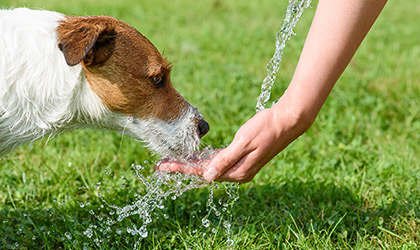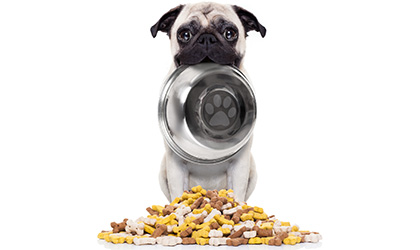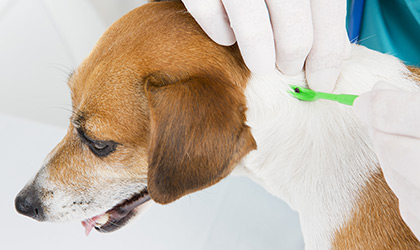
Did you know the pet food industry is worth £3 billion in the UK? Yep, pets are big business – and it’s only set to increase. Pet food trends tend to follow both the United States – the trailblazer in the pet food world – and human food – it has to appeal to the people buying it, right? So, what can we expect to serve up our four-legged friends in the coming years?
Humanisation
One notable trend dominating the pet food scene is the imitation of human food, with retailers working to emulate appearance, ingredients, aroma, and even product names. Many manufacturers now put greater emphasis on ‘clean labels’ – peppering pet food packaging with the latest health buzzwords: ‘seasonal’, ‘free-from’, ‘clean’ and ‘homemade’. The rise in humanisation can be attributed to the gap between human and pet food narrowing; many owners now perceive the nutritional needs of their furry companions in a similar light to their own.
Health focus
Thanks to the oh-so-Instagrammable healthy eating movement that has swept across our nations, the food industry is now striving for a more minimally processed and natural ‘feel’. In light of that, it’s safe to assume pet formulas will be manufactured in an equally health-conscious way. Ultimately, consumers want their pets to indulge in the most nutritious ingredients available – gone are the days of the fear mongering ‘bioengineered’ and ‘GMO’ foods. Retailers are even driving to add nutrient-dense super foods to the pet food mix. You can expect to see the likes of kale, chia, kelp, broccoli, apples, raw honey, and pumpkin filling ingredient lists. Pet nutrition will take on a more holistic role too – most specifically, dealing with the changes associated to ageing. Manufacturers will introduce variants to manage different aspects of pet health, catering for anti-inflammatory, cognitive, digestive, and skin nutrition.
Premiumisation
As the pet food trend continues to follow our tastes and nutritional demands, the need for premium ingredients is on the rise – and this includes a desire for locally sourced and traceable materials. Consumers are also calling for recipes to be British or gourmet, natural and simple, made with authentic ingredients, and to have a high vegetable and protein content.
Total transparency
The inclination for transparency isn’t anything novel in the pet food world (or the human food world, for that matter); however, it has certainly ramped up in recent years. Perhaps thanks to our ‘post-truth era’, owners now want to know exactly what they’re feeding their pets. Where was the food made? And how were the ingredients cultivated? The rise of such ethical consumerism has driven retailers to offer honest disclosures about how pet food is grown, harvested and made. A list of reduced or low claims won’t do anymore. Pet parents expect more simplicity, scrupulousness and transparency, and manufacturers need to step up their game to guarantee custom.
Insect proteins
In recent years, there’s been growing curiosity into using creepy critters as an alternative protein source. Although it may take some time before we see creepy crawlies on the menu, our furry-friends may be less inclined to turn their noses up. The move towards insects is still pretty innovative in the pet food world, with only select retailers adding them to formulas. But as we continue to search for more sustainable, cheaper and lower impact sources of pet nutrition, there’s no denying this concept will take off soon. Watch this space.
Treats and raw meat
Did you know the cat and dog treat market is one of the fastest expanding areas in the pet food industry? Year-on-year, it increases in value and volume, so it’s a highly lucrative sphere for manufacturers to focus on. Unsurprisingly, the emphasis on humanisation and premiumisation has transmuted into pet treats. Indeed, if you fancy it, you can now buy your cat a beer, or treat your dog to crisps, popcorn and even muffins! Raw meat products are another profitable area retailers are concentrating on. Currently, pet owners can purchase raw meat for dogs and cats that can be frozen and thawed before serving. However, freeze-dried raw food products are growing in popularity, as demonstrated by their rise the United States. Typically, these will feature in a complete pet food formula and then rehydrated to feed your furry-friend.
Single-servings
Single-servings of wet cat food are set to increase, as pet parents look to purchase a range of flavours to appease their finicky felines. Since cats are infamously fussy eaters, variation and palatability are essential. As with other innovations in the pet food world, single-serve recipe cat food tends to follow humanisation and premiumisation. You can expect to see a ‘delicious’ selection of gourmet cat food lining your supermarket shelves.
-
Limited-ingredient diets (LID)
When it first hit the market, limited-ingredient diet (LID) pet food was produced to alleviate allergies in furry companions, but the transparency of knowing the exact ingredients in such pet food turned out to be a big selling point for devoted owners – and this has contributed to a boom in LID sales. -
Personalised shopping
Advancements in technology have cultivated a new age of shopping – one that prioritises saving energy, time and money. This trend has played out in the pet food industry too, and can explain the shift towards e-commerce in pet food shopping and the increase in pet food home delivery. Some key players in the pet food world (Purina – we’re looking at you) have already clocked onto this, understanding that convenience is a powerful incentive for pet parents, particularly millennials, to sign up for a cat or dog food delivery service.
Final thoughts
Overall then, it seems much of our own tastes and demands will dictate the future of pet food. And given the increased emphasis on ‘cleaning eating’, ethical consumerism and premiumisation, it’s likely owners will see pet food products featuring familiar, healthy, sustainably sourced and quality ingredients. Above all though, consumers can expect total transparency from manufacturers, helping you understand the ins and outs of the pet food journey.
References:
-
Campden BRI Food & Drink Innovation. (2017). Pet food innovation - five trends to watch in 2018. Available online: https://www.campdenbri.co.uk/news/pet-food-innovation.php
-
Growth From Knowledge. (2017). Six pet food trends to watch in 2017. Available online: https://www.gfk.com/insights/news/six-pet-food-trends-to-watch-in-2017/
-
Pet Food Industry. (2018). 11 pet food trends industry experts forecast for 2017. Available online: https://www.petfoodindustry.com/articles/6232-pet-food-trends-industry-experts-forecast-for-2017
-
Pet Food Industry. (2017). 4 human food trends for pet food market to watch in 2018. Available online: https://www.petfoodindustry.com/blogs/7-adventures-in-pet-food/post/6760-human-food-trends-for-pet-food-market-to-watch-in-2018



